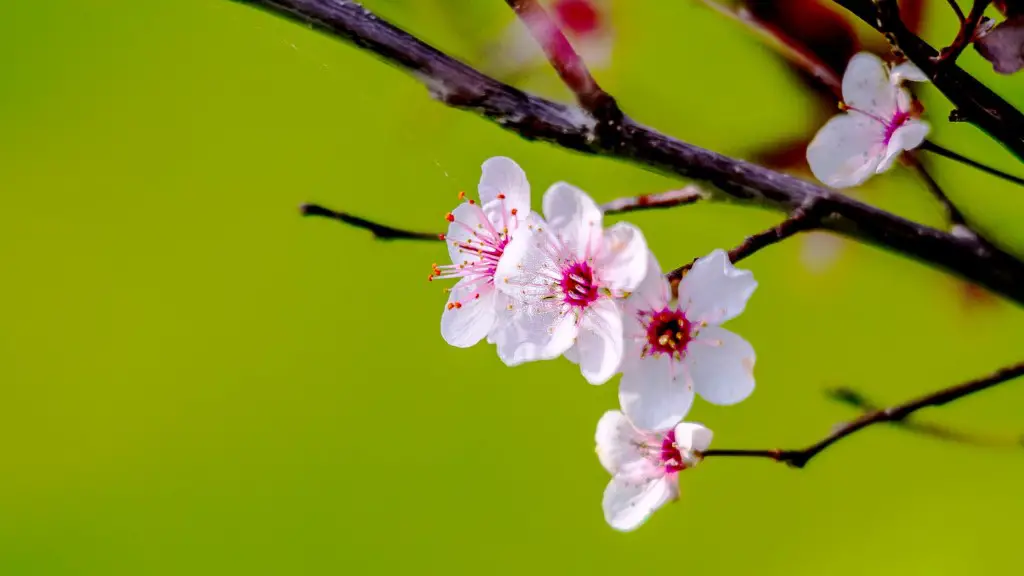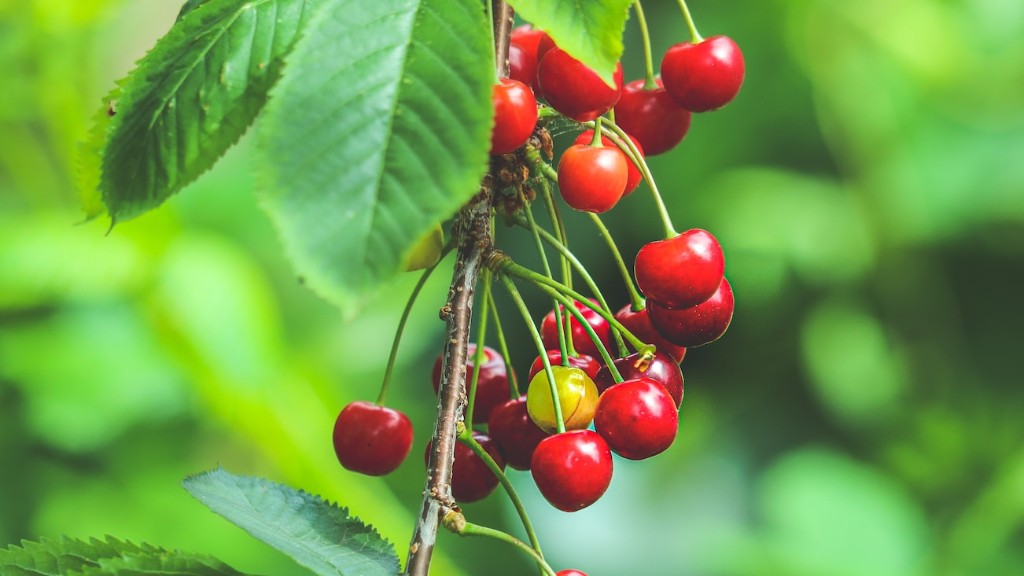Pruning Basics
Cherry plum trees are a beautiful addition to any garden, however, they do require some pruning in order to keep them healthy and looking attractive. Pruning is essentially the trimming or cutting back of tree branches, and can help reduce the size of a tree, encourage new growth, improve the shape of the tree, and remove dead or diseased branches. Pruning cherry plums will help them thrive, so it’s important that you know how to do it correctly.
When to Prune
The best time to prune your cherry plum tree is in early spring, just before it begins to bloom. This will ensure that you don’t remove any of the flower buds that have already formed. Plum trees bloom in early spring, so it’s important to wait until the flowers have finished blooming before you begin any pruning. It’s important to note that if you wait too long to prune, the trees can become overgrown, requiring more drastic steps to reduce the size of the tree.
Tools Needed
When pruning a cherry plum tree, it’s important to use the right tools. You will need a sharp pair of bypass pruners, a pruning saw, and a pair of gloves. If you’re using a pruning saw, make sure it’s sharp so that you won’t have any problems cutting through the branches. You should also wear gloves to protect your hands when handling the branches while pruning.
How to Prune
When pruning your cherry plum tree, the first step is to remove any dead or diseased branches. This will help keep the tree healthy and ensure that it continues to flower and produce fruit. The second step is to remove any weak or crossing branches. This will help improve the overall shape and structure of the tree. You can also thin out the canopy and remove any branches that are growing too close together. Finally, you can cut back any branches that are growing too long or too far from the center of the trunk.
Caution and Safety
Pruning cherry plum trees can be dangerous, so it’s important to be careful and use caution. Make sure that the area you’re working in is clear and uncluttered, and wear protective equipment such as goggles and gloves. You should also be aware of overhead power lines, as you could be in danger of electrocution if you prune branches that are too close to the lines. Be sure to research the proper pruning techniques, and consult an expert if you’re unsure of how to proceed.
Caring for the Tree
Once you’ve completed the pruning, it’s important to care for your cherry plum tree to keep it healthy and encourage further growth. This includes providing it with adequate water, fertilizing it in the spring and summer, and mulching the soil around its base. With the proper care, your cherry plum tree should remain healthy and attractive for years to come.
Disease and Pest Prevention
It is important to keep your cherry plum tree free from disease and pests. This can be achieved by keeping the tree well-watered and removing any weak or dead branches during the pruning process. You may also need to apply insecticide or fungicide in order to prevent any pest or disease problems. Regular inspections of the tree should also be carried out, so any problems can be identified and addressed quickly.
Fruiting
When pruning cherry plum trees, it is important to remember that the tree needs to be in good health and have access to adequate sunlight in order to produce fruit. Pruning should not affect its ability to produce fruit, however, if the tree is not healthy then it may struggle to do so. It is also important to practice patience when it comes to harvesting the fruit, as cherry plums can take several years to reach full maturity before they begin to produce fruit.
Tips and Tricks
When pruning cherry plum trees, it can be helpful to use a pruning template. This can be easily drawn onto a piece of paper, and will help you plan out where and how much you should prune. It is also important to act quickly when pruning to ensure that the tree’s wounds heal properly before any pests or diseases can set in. Finally, it is also important to clean your pruning tools before and after each use to avoid spreading any bacterial or fungal diseases.
Crown Thinning
Crown thinning is a type of pruning used to reduce the amount of foliage on cherry plum trees. This can be used to reduce the size of the tree, as well as reduce the risk of storm damage or branch breakage due to heavy snow or high winds. To crown thin a cherry plum tree, begin by removing any dead, damaged, or diseased branches. Then, use a combination of thinning cuts and selective pruning to create a balanced and uniform canopy.
Post-Pruning Care
Once you have finished pruning your cherry plum tree, it is important to provide proper aftercare in order to ensure that the tree recovers quickly and continues to thrive. This includes cleaning up any mess in the area and ensuring that the tree’s wounds are fully sealed by applying a wound sealer. It is also important to keep an eye on the tree for signs of any problems, and to prune away any new dead branches as they appear.
Cherry Plum Trees as Ornamentals
Cherry plum trees are not just a great source of fruit, but can also be grown as ornamentals. With their showy white blooms in the spring and attractive red and purple fruits hanging in the summer, cherry plums are a beautiful addition to any garden. When pruning, the goal should be to create an attractive tree with an open center, and a strong, well balanced structure. Hard pruning should be avoided as much as possible, as this can damage the tree’s health and reduce its chances of producing fruit.
Sunlight Requirements
Cherry plum trees require full sun and well-drained soil in order to thrive. When planted in areas with too much shade, the trees may struggle to produce fruit and may become spindly and weak. During the pruning process, be sure to leave enough leaves on the tree so that it has enough foliage to produce energy from photosynthesis. If a cherry plum tree isn’t getting enough sunlight, it may be necessary to thin out the crown and reduce the amount of foliage.
Genetic Considerations
Finally, it is important to consider the genetic makeup of the cherry plum tree when pruning. Trees with dwarf or semi-dwarf genetics may not require as much pruning in order to keep them healthy and looking attractive, as they are naturally smaller in size. However, larger trees may require more frequent pruning, as their size and structure can change more dramatically over time.
Pruning Frequency and Timing
Cherry plum trees should be pruned a few times each year in order to keep them healthy and to maintain their shape. Pruning should take place in early spring before the tree begins to bloom, and again in the late summer or early fall after the fruit has ripened. This will ensure that the tree has enough time to heal properly between prunings and to produce enough fruit. Additionally, it is important to check the tree regularly for any signs of disease or pest infestations, and to prune away any affected branches.

